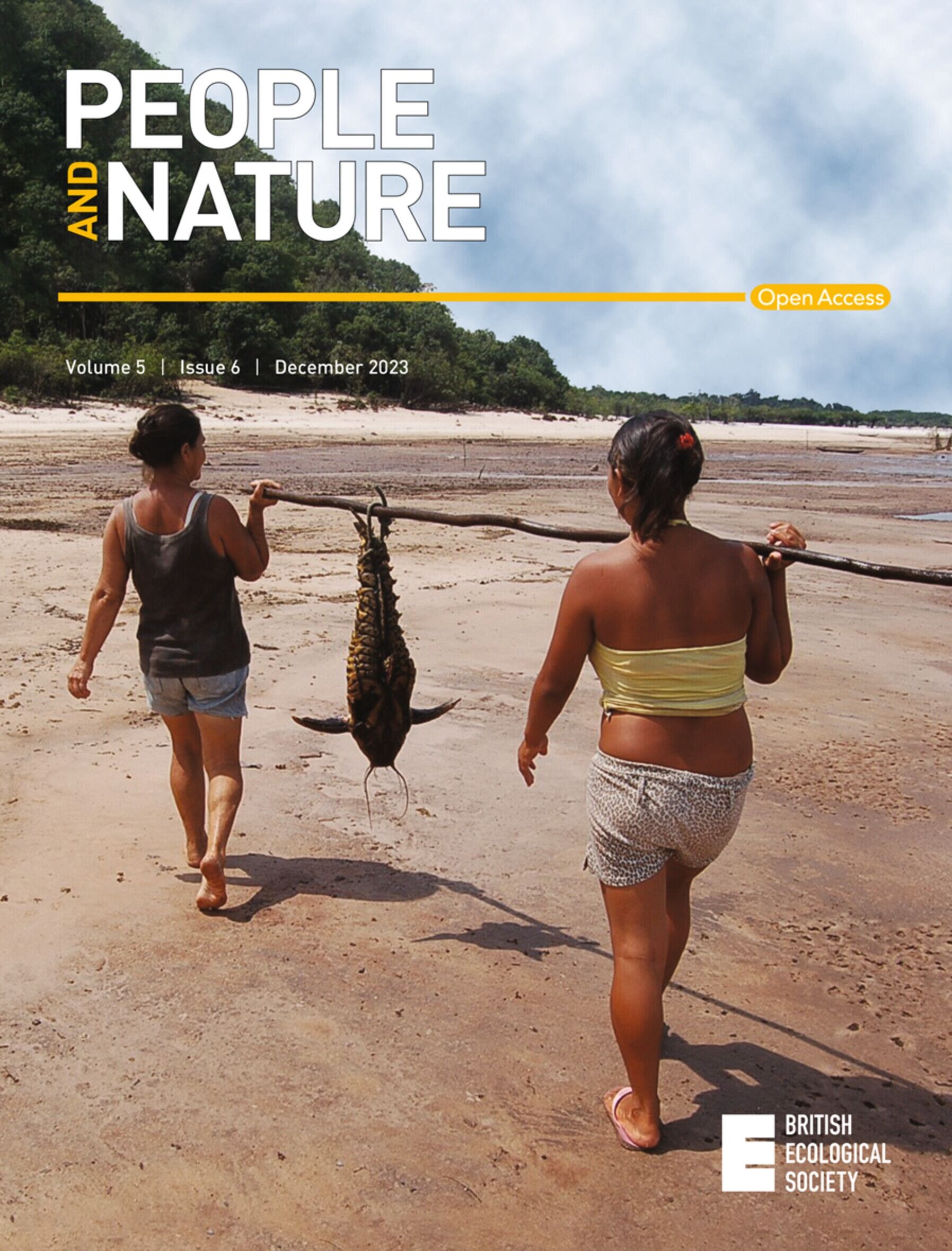Coexistence across space and time: Social‐ecological patterns within a decade of human‐coyote interactions in San Francisco
IF 4.9
1区 环境科学与生态学
Q1 BIODIVERSITY CONSERVATION
引用次数: 0
Abstract
Abstract Global change is increasing the frequency and severity of human‐wildlife interactions by pushing people and wildlife into increasingly resource‐limited shared spaces. To understand the dynamics of human‐wildlife interactions and what may constitute human‐wildlife coexistence in the Anthropocene, there is a critical need to explore the spatial, temporal, sociocultural and ecological variables that contribute to human‐wildlife conflicts in urban areas. Due to their opportunistic foraging and behavioural flexibility, coyotes ( Canis latrans ) frequently interact with people in urban environments. San Francisco, California, USA hosts a very high density of coyotes, making it an excellent region for analysing urban human‐coyote interactions and attitudes toward coyotes over time and space. We used a community‐curated long‐term data source from San Francisco Animal Care and Control to summarise a decade of coyote sightings and human‐coyote interactions in San Francisco and to characterise spatiotemporal patterns of attitudes and interaction types in relation to housing density, socioeconomics, pollution and human vulnerability metrics, and green space availability. We found that human‐coyote conflict reports have been significantly increasing over the past 5 years and that there were more conflicts during the coyote pup‐rearing season (April–June), the dry season (June–September) and the COVID‐19 pandemic. Conflict reports were also more likely to involve dogs and occur inside of parks, despite more overall sightings occurring outside of parks. Generalised linear mixed models revealed that conflicts were more likely to occur in places with higher vegetation greenness and median income. Meanwhile reported coyote boldness, hazing and human attitudes toward coyotes were also correlated with pollution burden and human population vulnerability indices. Synthesis and applications : Our results provide compelling evidence suggesting that human‐coyote conflicts are intimately associated with social‐ecological heterogeneities and time, emphasizing that the road to coexistence will require socially informed strategies. Additional long‐term research articulating how the social‐ecological drivers of conflict (e.g. human food subsidies, interactions with domestic species, climate‐induced droughts, socioeconomic disparities, etc.) change over time will be essential in building adaptive management efforts that effectively mitigate future conflicts from occurring. Read the free Plain Language Summary for this article on the Journal blog.跨越时空的共存:旧金山人类与土狼互动十年中的社会生态模式
全球变化将人类和野生动物推向资源日益有限的共享空间,从而增加了人类与野生动物相互作用的频率和严重程度。为了了解人类与野生动物相互作用的动态,以及人类世中人类与野生动物共存的因素,我们迫切需要探索导致城市地区人类与野生动物冲突的空间、时间、社会文化和生态变量。由于它们的机会主义觅食和行为灵活性,土狼(Canis latrans)经常在城市环境中与人类互动。美国加利福尼亚州的旧金山拥有非常高密度的土狼,使其成为分析城市人类与土狼互动以及随时间和空间变化对土狼态度的绝佳区域。我们使用了来自旧金山动物护理和控制中心的社区策划的长期数据源,总结了旧金山十年来土狼目击和人类与土狼互动的情况,并描述了与住房密度、社会经济、污染和人类脆弱性指标以及绿地可用性相关的态度和互动类型的时空模式。我们发现,在过去5年中,人类与土狼的冲突报告显著增加,在土狼幼崽繁殖季节(4 - 6月)、旱季(6 - 9月)和COVID - 19大流行期间,冲突更多。冲突报告也更有可能涉及狗,发生在公园内,尽管总体上更多的目击事件发生在公园外。广义线性混合模型显示,冲突更有可能发生在植被绿化率高、收入中位数高的地方。同时,报告的土狼大胆度、欺侮和人类对土狼的态度也与污染负担和人口脆弱性指数相关。综合与应用:我们的研究结果提供了令人信服的证据,表明人类与土狼的冲突与社会生态异质性和时间密切相关,强调了共存之路将需要社会信息策略。进一步的长期研究阐明冲突的社会生态驱动因素(如人类粮食补贴、与国内物种的相互作用、气候引起的干旱、社会经济差异等)如何随着时间的推移而变化,对于建立有效缓解未来冲突发生的适应性管理工作至关重要。在《华尔街日报》博客上阅读免费的《简明语言摘要》。
本文章由计算机程序翻译,如有差异,请以英文原文为准。
求助全文
约1分钟内获得全文
求助全文

 求助内容:
求助内容: 应助结果提醒方式:
应助结果提醒方式:


